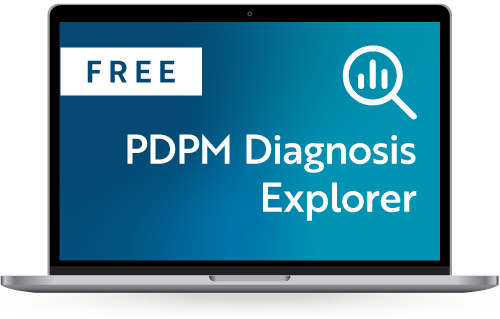Texas Medicaid managed care is coming Mar. 1… read this FAQ to prepare
As a service to Texas long-term care providers, SimpleLTC and Texas Medicaid Coalition offered a free webinar on Dec. 11 entitled, “Preparing for Texas Star+Plus Medicaid Managed Care”. (Watch it on-demand here.)
Nearly 1,000 attendees participated and raised dozens of questions during the training. Texas Medicaid Coalition has worked with HHSC to get answers to all of those questions, and we’re now publishing them here to help you further prepare for the changes.
All the answers below were received directly from HHSC. For additional information, see the HHSC STAR+PLUS expansion page or the SimpleLTC Texas Medicaid managed care page.
Q: What is an MCO?
A: Managed Care Organization. Managed care is healthcare provided through a network of doctors, hospitals and other healthcare providers responsible for managing and delivering quality, cost-effective care.
Q: What is STAR+PLUS?
A: “STAR+PLUS” or “STAR+PLUS Program” means the State of Texas Medicaid managed care program that provides and coordinates Covered Services for preventive, primary, acute and long-term services and supports, and nursing facility care, to adult persons with disabilities and elderly persons age 65 and over who qualify for Medicaid through the SSI program and/or the MAO program. Children birth through age 20 who reside in nursing facilities will not participate in STAR+PLUS.
Q: Will the Medicaid application process change for NFs?
A: The process will stay the same. MCOs will not add a member until after they are approved for Medicaid and the resident chooses an MCO (or is automatically assigned). Once approved for Medicaid by your Regional Office, an electronic file will be sent to the State Enrollment Broker to let them know that an enrollment packet needs to be sent to that resident.
Q: Will this change affect all Medicaid residents in our facility? How does this affect billing?
A: Yes, any resident with Medicaid benefits (both dual eligible and Medicaid only) will need to enroll in a managed care plan. You may still submit claims through TexMedConnect/TMHP, but the state portal will only act as a router. TMHP will only adjudicate and reimburse fee-for-service claims. So, it is recommended that you bill the MCO portals directly. These portals allow you to track claims status. If you need to make corrections/adjustments, you must go through MCO portal for this action. There are some modifications on TMHP that will go into effect on Feb. 1, 2015, so that any claims you submit through them can be appropriately routed and accepted by the MCOs. Items that now have to be input include primary diagnosis, admit date, taxonomy and other insurance. TMHP will also post communication banners on their site to inform you of required changes.
Each MCO currently offers webinars on the use of their portals. Check their websites for dates and times. MCOs are Amerigroup, United, Cigna Healthspring, Superior Health and Molina.
Q: Will the MCOs determine medical necessity, or will it still be TMHP? How is the appeals process structured?
A: You will follow the process for establishing medical necessity and level of care at admission in the same way you have historically. There are no changes to the process after Mar. 1.
The MCO does not determine admission medical necessity. They will only establish if a service needing preauthorization (add-on service) is medically necessary. You (your resident/legal representative) will still follow the appeals process through TMHP and request for Fair Hearing as you have historically in cases where level of care/medical necessity is denied.
Q: Will the RUGS still pay 90 days?
A: Yes, unless you submit another MDS prior to that time (e.g., significant change of condition). It will pay with the RUGS of the most current MDS submission.
Q: If the resident is unable to make an MCO decision and does not have a family/legal representative, can the facility act as representative payee or Medicaid representative make the decision for them?
A: Unfortunately, nursing facility staff are not permitted to make the choice for the resident, even under these circumstances. These individuals will be automatically enrolled in a health plan after Feb. 11, 2015.
Q: What information we can provide the resident’s family to help them decide which plan is right for them?
A: The mailed enrollment packets included a yellow comparison chart. This grid lists the “value added services” each health plan offers as an extra benefit, which are incentives to choose one plan over another. This is the best way to decide which plan works best for the resident. Some plans offer an additional dental benefit and others offer additional monies for vision exams and eyeglasses. You may take a look at the enrollment packets online at the Maximus site or HHSC web site as well. Outside these extra benefits, all plans must offer what traditional Medicaid would have offered as a benefit, so across the board they are the same.
Q: Is the MCO service area for the NF’s address only? What about a resident whose spouse lives in another county and joins an MCO in that county (different than NF’s county)?
A: Your residents mush choose a health plan in the service delivery area where the nursing facility is located (due to provider networks, assigned service coordinators and NF contracting). The resident’s address should be updated at www.yourtexasbenefits.com so that MAXIMUS can sign them up in the appropriate service delivery area.
Q: Do outside providers (doctors, etc.) have to be contracted with the MCO for a resident to utilize that provider? Or is it just those residents that do not have full coverage/full vendor?
A: For dual eligibles, in most cases these providers will bill Medicare for their services. The rule of thumb is that any provider that traditionally bills Medicaid (except hospice) for any service needs to be contracted with the MCO, since they will seek pre-authorization and now bill the MCO for reimbursement. They will also need to be Medicaid providers.
Q: What is a “clean claim” and where can I find more information? I haven’t been able to find anything in the Texas Administrative Code.
A: “Clean Claim” means a claim submitted by a provider for health care services rendered to a Member with the data necessary for the MCO to adjudicate and accurately report the claim. Claims for Nursing Facility Unit Rate services that meet DADS’ criteria for clean claims submission are considered Clean Claims. (Full definition here.)
Additional information regarding DADS’ criteria for clean claims submission is included in HHSC’s Uniform Managed Care Nursing Facility Claims Manual Chapter 2.3:
Section XIV Modified by Version 2.1
An MCO’s claims and adjudication requirements may not exceed or be more restrictive than the following DADS claims adjudication requirements.
- The Nursing Facility resident must be Medicaid eligible for the dates of service billed;
- The Nursing Facility resident must be in the Nursing Facility for the dates of service billed;
- The Nursing Facility resident must have a current Medical Necessity determination for the dates of service billed; and
- The Nursing Facility Provider had to be in good standing for the dates of service billed (i.e., not on vendor payment hold for any reason).
- The MCO must make available to contracted Network Providers its claims coding and processing guidelines. The information furnished to the Provider should be specific to codes and processing guidelines for particular Programs and provider types.
“Clean Claims” are also referenced in the Code of Federal Regulations, Title 42, §447.45(b), defined as a service claim submitted by a program provider for a service delivered to an individual that can be processed without obtaining additional information from the provider of the service or from a third party.
Q: What is the protocol when a patient from another area enrolled in another MCO is admitted to your facility?
A: When the TIERS file gets updated, a notice will be sent to MAXIMUS, the state enrollment broker, to have them send an enrollment kit to the resident with the information regarding the health plans in the new service delivery area. The resident will have 15 days to decide or will be automatically assigned to a health plan (which of course they can change if desired). It would be helpful for the NF staff at the time of admission to review information with the resident or responsible party about the MCOs they work with and educate them about the process.
After the choice is made, it can take 15 to 45 days for the new MCO health plan to take effect. The “old” MCO is responsible for paying claims on that resident until the “new” one takes effect. The admissions office should contact that MCO to let them know their member is now in another service area and inquire as to how they should submit their interim claims to them and secure any needed prior authorizations as necessary. The MCO may or may not have the facility complete a one-time contract but each MCO may handle this differently. It is recommended that you contact the MCO prior to admitting the resident to your facility.
Q: What if the resident cannot competently (mentally or physically) select a plan? How do we complete the enrollment?
A: Unfortunately, NF staff may not actually complete the enrollment, although you can assist residents by providing information to help them make the best choice. For those who would not benefit from assistance (i.e. cognitively impaired), perhaps they have a responsible party, power of attorney, guardian, family member or someone else who would advocate on their behalf. If not, they will be automatically enrolled in a health plan after Feb. 11, 2015 for an effective date of March 1, 2015.
This HHSC flyer is designed to assist NF staff in helping residents enroll in a plan.
Q: What if a facility fails to contract with any MCOs? What if a resident refuses all plans?
A: If the facility decides not to contract with any of the MCOs, the resident may still choose the health plan of their choice. The resident can still live in the facility and does not have to move. The facility will be considered an out-of network provider and will be reimbursed at 95%.
Enrollment is mandatory for the nursing facility Medicaid population. If a resident refuses to choose a health plan, they will be automatically assigned to an MCO health plan after Feb. 11, 2015 for an effective date of March 1, 2015.
Q: What is the approximate turnaround time for GDT authorization?
A: Within 72 hours.
Q: Will the R&S forms for GDT still be submitted to DADS?
A: No. Requests for Goal Directed Therapy/Medicaid physician ordered rehabilitation services will now have to go to the MCO for preauthorization prior to delivery of services. They will probably ask you to send something to document why you feel the GDT is medically necessary. Each MCO can walk you through their process.
You will bill the MCO and they will adjudicate these claims. DADS is no longer involved in this process. However, the rates for evaluations and therapy services are set by the state, not negotiated by the MCO. You can find the rates on the HHSC website.
However, if PT/OT/ST is warranted or recommended under PASRR specialized services for your residents with Intellectual Developmental Disorders, those are still billed to Medicaid fee-for-service. The MCO will also check to see if these rehab services are covered under PASRR services before determining if they need to provide you with an authorization. They will have up to 72 hours to make that determination and provide you with an answer.
Q: How do we notify the MCO of an admission, discharge or ER visit? Is there a form or do we call?
A: Each MCO will have a preferred method of communication. Molina, for example, has a template form that is faxed to them. HHSC recommends putting these items in a written format to the MCOs, but you will need to contact each MCO directly for their specific instructions. This document was created by HHSC as a NF reference for contacting the various MCOs, as well as key topics of interest related to managed care.
Our local hospital and clinic will have contracts with both available MCOs. However, the hospital in another city to which our hospital sometimes transfers residents will only have one of the two MCOs. What should we do?
HHSC can follow up with the other MCO in your area to see if they have reached out to this particular hospital to ask them to contract. Please email HHSC with your request and provide the hospital name and contact info, plus the name of other MCO in your service delivery area.
Q: I thought that if a resident needed to go to the ER, we did not need prior authorization? How can you notify the MCO know one day prior to an ER visit?
A: You do not need a prior authorization in this instance. If your resident needs emergency hospital services, call 911 and do what you need to get immediate help. The MCOs are just asking that you notify them within one business day that their member was sent to the ER. You can notify them later that day or the next day. If it occurs on the weekend or holiday, they ask to be notified by the next business day.
Q: Our facility does not contract with Amerigroup. Does this change affect us?
A: If your facility is in the service delivery area that Amerigroup services, then yes, it will affect you. Your residents will have the option to choose from any and all MCOs in your service delivery area. If they choose Amerigroup’s health plan, they may still reside in your facility, but your facility will be considered an out-of-network provider. As an in-network provider, you have certain protections: reimbursement of 100% of RUG rate and a turnaround time for adjudication of clean claims within 10 days. Out-of-network providers will be paid at a rate of 95% and the claims payment time of 10 days cannot be guaranteed.
There is still time to contract with Amerigroup. You may contact provider relations at 866-696-0710.
Q: Can dental services still be done as IME if over the plan allowance or if the plan does not offer dental?
A: Yes, nothing about the IME process has changed. That process will continue as it has historically. The dentists who provide routine dental services for NFs do not have to contract with the MCO if they are being reimbursed through the IME process.
Some MCOs are offering an additional $250 annually for routine dental exams, X-rays and cleaning as “value added services.” These are inducements to have residents choose their MCO over another if that is a service of interest to them. If the resident chooses the MCO and utilizes this value added benefit, they must use a dental provider contracted with the MCO (dentists working with nursing home residents may decide to be a provider of these value added services and if so, they should contact the MCO to secure a contract and go through the credentialing process). Otherwise, routine dental services are not a covered MCO service.
Emergency dental services are covered and reimbursable by the MCO. These are considered add-on services and must be pre-authorized by the MCO. The contracted dental provider should be the entity seeking preauthorization and would bill the MCO portal directly. Dentists interested in providing emergency dental services must also be contracted with the MCO and should contact them if they desire to be in their provider network. So, as facility staff, you should inquire with the MCO who their network providers are to facilitate setting appointments for your residents.
Q: Will we still need to process 1263B forms for Medicaid?
A: Yes, the IME process will not change. Dentists who provide routine dental services to nursing facility residents will still be compensated in this way and they do not need to contract with the MCO.
Q: If a resident has applied income, will dental still be offered like the current Medicaid allowance programs?
A: Yes, applied income and calculation of IME will not be handled by the MCOs. The process will remain unchanged. Dentists who serve nursing facility residents and get paid through IME process will not be required to contract with the MCOs.
However, some MCOs are offering an additional $250 annually for routine dental exams, X-rays and cleaning as “value added services.” These are inducements to have residents choose their MCO over another if that is a service of interest to them. If the resident chooses the MCO and utilizes this value-added benefit, they must use a dental provider contracted with the MCO. (Dentists working with nursing home residents may decide to be a provider of these value-added services and, if so, they should contact the MCO to secure a contract and go through the credentialing process.) Otherwise, routine dental services are not a covered MCO service.
Emergency dental services are covered and reimbursable by the MCO. These are considered add-on services and must be pre-authorized by the MCO. The contracted dental provider should be the entity seeking preauthorization and would bill the MCO portal directly. Dentists interested in providing emergency dental services must also be contracted with the MCO and should contact them if they desire to be in their provider network. So, as facility staff, you would want to inquire with the MCO who their network providers are to facilitate appointment setting for your residents.
Q: In regard to vendors working directly with the MCO for add-on features, will the MCO use groups that are currently in the facility (e.g., wheelchair provider) or will the MCO bring in vendors that they prefer? If the vendors have not been in the facility before, do we need to have a business agreement with them?
A: During this stage of contracting between NFs and MCOs, the MCOs ask that the NF complete a demographic form to list the providers that they use so the MCO can follow up with them for contracting. The idea is to make this transition as seamless as possible for the residents and the NF staff. Vendors of add-on services will need to contract with the respective MCOs to be utilized. The only exception to this may be your contracted rehabilitation company that provides PT/OT/ST in your facility. If the facility is billing for goal-directed therapy on their behalf, they do not need to contract directly with the MCO. If they are doing their own billing, they will have to be Medicaid providers and contract directly with the MCO.
It’s recommended that the NF have conversations with your physicians and ancillary providers – any that routinely bill Medicaid for services (other than hospice, which is still fee-for-service) – and encourage them to contract so that you can still have them provide services for your residents. If there are no providers for a particular service your facility uses (e.g., DME provider of customized power wheelchairs) that are contracted with the MCO, then yes, they will have to choose a network provider to deliver the service/supplies/equipment.
As far as having a Business Agreement with these vendors, that is up to your corporate office/facility policy/legal department.





2 Comments on “Texas HHSC answers your STAR+PLUS managed care questions”
HELP PLEASE HELP ME HELP MY DISABLED PATIENT!!!!!!!!!!
What do I do if I have been trying for almost 5 months to get an authorization done & approved through Superior (since 10-18-2016) & still NOTHING!!!!! I have a patient with a tracheostomy & his nursing care is a necessity to prevent hospitalization! PAS hours……NO PROBLEM! We keep getting the total run around with maintaining the same LVN hours that he has previously had!
I haven’t been paid for services I’ve rendered & I myself, have children that are starting to get hungry!
Bottom line…….no pay, no nurse= sick, hospitalized patient= MORE MONEY PAID TO HOSPITAL !
Hi Angie — This is outside the scope of what SimpleLTC does (we’re a software provider). You’ll need to contact Superior directly (every MCO has a support line for claims). Alternatively, you can notify the Texas HHS PASRR unit of the issue and ask for their guidance. You can find the contact information on this page.